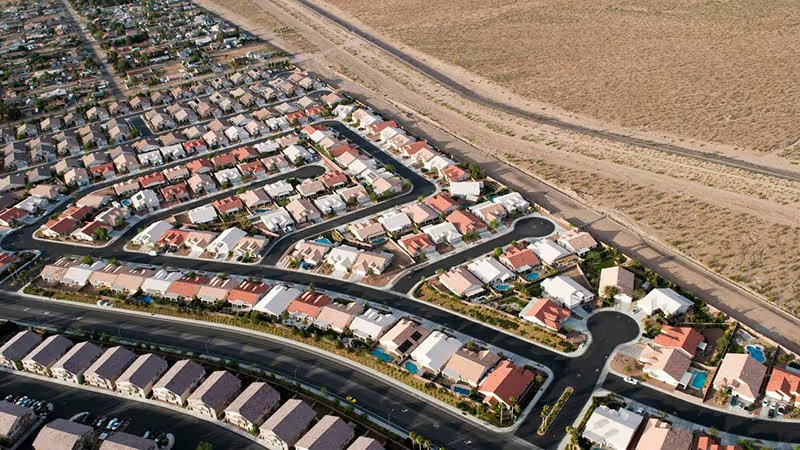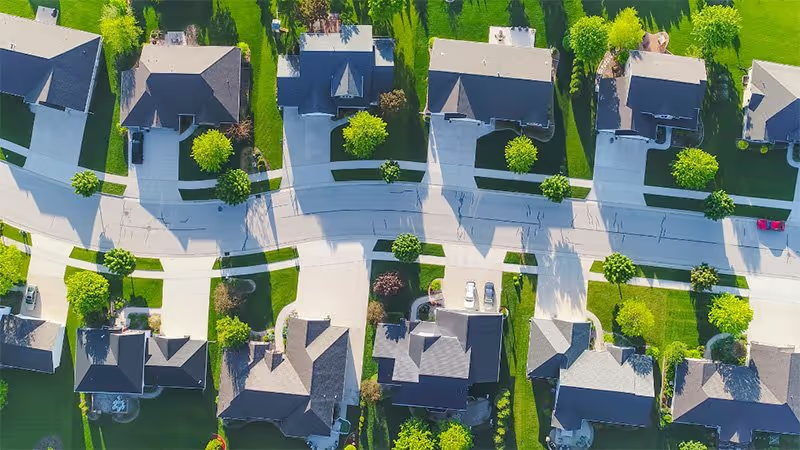Editor's Note: The challenges our cities face are growing, but so is the strength of this movement. Every story we share, every idea we spread, and every tool we build exists because people like you are committed to showing up. Your membership isn’t passive—it’s the momentum that makes change possible.
The Loneliness Epidemic
Recently released research from the American Psychological Association (APA) found that middle-aged Americans are lonelier than their European counterparts. According to an APA press release, the study was conducted from 2002 to 2020 and observed more than 53,000 participants from the United States and 13 European countries. Responses were drawn from participants who were between the ages of 45 and 65. Leaving aside the fact that these are optimistic “middle” ages (at 87 years, Monaco has the longest average life expectancy, and most countries, including the U.S. at 76 years, are under 80 years), the study’s findings point to global declines in social connectivity, as well as ones specific to the U.S. that warrant investigation and, ideally, a response.
The study may not have pinpointed specific causes for the loneliness trend, but it did make some guesses. From the press release:
The study identified differences in cultural norms, socioeconomic influences and social safety nets between the U.S. and other European countries as potential explanations for the loneliness gap between the U.S. and Europe. Cultural norms in the U.S. are often characterized by individualism, increased social media use, declining social connections and increasing political polarization. The pressure faced by U.S. middle-aged adults is also further compounded by a higher residential mobility, weaker family ties, increasing job insecurity and income inequality. Additionally, social safety nets in the U.S. tend to be less comprehensive compared with some European nations regarding family leave, unemployment protection and childcare support.
The APA findings align with the Surgeon General’s 2023 declaration of a loneliness epidemic and 2021 Harvard research that found “36% of all Americans — including 61% of young adults and 51% of mothers with young children — feel ‘serious loneliness.’” According to the National Academies of Sciences, Engineering, and Medicine (via CDC), the consequences of this loneliness are significant:
- “Social isolation significantly increased a person’s risk of premature death from all causes, a risk that may rival those of smoking, obesity, and physical inactivity.”
- “Social isolation was associated with about a 50% increased risk of dementia.”
- “Poor social relationships (characterized by social isolation or loneliness) was associated with a 29% increased risk of heart disease and a 32% increased risk of stroke.”
- “Loneliness was associated with higher rates of depression, anxiety, and suicide.”
- “Loneliness among heart failure patients was associated with a nearly 4 times increased risk of death, 68% increased risk of hospitalization, and 57% increased risk of emergency department visits.”
But Americans aren’t just lonely, they’re unhappy too, at least according to The World Happiness Report. First published in 2012, the report tracks the self-reported happiness of people across the globe, and this year’s report, which surveyed over 100,000 people spanning 130 countries, saw Americans drop eight spots on the list to 23rd place. The report’s editor, Lara Aknin, told Axios some of the reasons for the decline, especially for Americans under 30 who rank 62nd happiest in their age group (over-60 Americans rank 10th place):
Today’s young people report feeling less supported by friends and family, less free to make life choices, more stressed and less satisfied with their living conditions … [and] people under 30 today also feel less confident in government and have increased perceptions of corruption.
She also noted that older Americans are happier than young ones. In other words, as lonely as the older Americans may be per the previously cited APA study, young people are lonelier and unhappier (the two states are highly correlated).

To recap, today’s America is an economically shaky, politically corrupt and polarized country lacking adequate social safety nets for most of its citizens; a country that fetishizes individuality and digital escapism while shirking familial and social connections. Who’d have thought these conditions would produce a lonely, unhappy, unhealthy populace?
The Suburban Connection
There’s an additional reason for the above trends, a reason that could help explain why Americans are lonelier than Europeans. That reason is suburban sprawl.

Let’s start with some key facts about American housing in the last 20 years:
- Single-family (suburban) homes made up about 65%–70% of the U.S. housing stock. The median size of all single-family homes is 1,826 square feet, with new homes hovering around 2,500 square feet for the last 20 years.
- The average household size (the number of people living in a home) has remained around 2.55 for the last couple of decades, meaning that the U.S. per capita interior residential area is in the range of 700 to 1,000 square feet.
- Median single-family home lot sizes have ranged from 8,000 to 9,000 square feet. Housing and lot sizes are usually correlated but not always, since small homes can occupy large lots and vice versa. Therefore, lot size is a more operative figure in terms of sprawl because it represents a home’s total footprint.
- Daily, the average American spends an hour driving according to AAA, 25 minutes socializing and communicating, 2.5 hours watching TV, and 16 minutes exercising, according to the BLS.
What do housing, transit and lifestyle statistics have to do with loneliness and unhappiness, you might ask. Well, I don’t think it’s a reach to suggest that separating people physically also leads to emotional and psychological separation. Moreover, the implements that make sprawl-induced physical separation work on a societal level — cars to contract long distances and digital media to ameliorate the effects of social isolation — deepen loneliness and unhappiness on the personal level. These implements also make people sedentary, directly relating to the fact that 73% of the total American population is overweight and 42% is obese, per the CDC.
One of the biggest issues is population density. At the risk of oversimplifying, it’s a lot harder to socially isolate when there are people around you. America’s obsession with and dependence on low-density, single-family housing precludes people living close together. A suburb near where I live — Louisville, Colorado — has a population density of 2,665 people per square mile. Outside my longtime home of New York City is Scarsdale, New York, with a population density of 2,734 people per square mile. But these are relatively dense suburbs with areas zoned for apartments and condos. The population densities of most American suburbs are closer to 1,800-2,000 people per square mile.
Compare these suburban population densities to a few cities where I’ve lived: Brooklyn has 37,339 people per square mile, DC has 11,280 and Berkeley has 11,917. Relating back to the APA study, European cities (both big and small), tend to have higher population densities than American ones. For example, Paris has a population of 53,000 people per square mile, Copenhagen has 18,900 and Munich has 13,000.
But the numbers belie key details that make American suburbs — and the country’s sprawling, car-centric cities like Dallas, Atlanta and Los Angeles — such lonely, miserable, unhealthy places.
Most dense urban areas have mixed-use zoning, so people can live near where they work, shop and recreate; so residential areas don’t clear out during work hours; and so commercial areas don’t clear out during off-hours. There are also many “third spaces” — neutral spaces to meet that are neither residential nor professional — like sidewalks, cafes, bars and parks where you can meet and run into other people. People in dense areas often walk and use public transportation to get around, giving them ample opportunities for frequent, spontaneous social engagement.
Low-density suburbs and cities are often characterized by single-use zoning, meaning housing is in one place and work, shopping and recreation are in another. This zoning produces residential areas that are lifeless during working hours, save for landscaping crews. And because suburban life is largely centered inside homes, not on the sidewalks or at bars, cafes, etc., residential areas remain lifeless at night, as well.


Instead of third spaces, suburbs have strip malls, office parks and other commercial districts, each designed to move people from parking lots to cash registers and desks as fast as possible, thus leaving few opportunities for spontaneous or planned social encounters. And of course, the dominant form of suburban transportation is cars, which socially and environmentally insulate their drivers — often whilst drowning them in stress-inducing cortisol. If suburbanites manage to have social connections and happiness in these conditions, they are doing so in spite of the many barriers modern America puts in front of them.
How to Respond
In the intro, I alluded to a “response” to global declines in social connectivity and, by extension, happiness. A high-level response involves the abolition of single-family, single-use zoning, the regulatory mechanisms that effectively prevent easy socializing and human-powered movement. Barring that, a ground-level response involves forsaking big, individuated homes to live in areas with relatively high density that are near central business districts; it involves walking, biking or taking public transportation when you would otherwise drive; it involves directing your eyes away from screens to the people and things in your environment.
Of course, even suggesting to Americans that they reorganize and reorient how they live — something I frequently and foolishly do to anyone who will listen — sends most of them, particularly older ones, into paroxysms of protest. Younger folks are generally more open to new ways of living, but they generally lack sufficient economic or political clout to affect change. So it seems to me that change will only come about when loneliness, misery and poor health become unbearable enough to cancel out the dubious comfort of the status quo. I fervently pray that this time comes soon.





